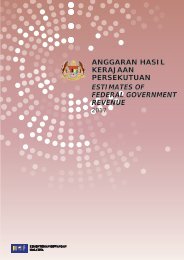WEALTH
2c0esX1
2c0esX1
You also want an ePaper? Increase the reach of your titles
YUMPU automatically turns print PDFs into web optimized ePapers that Google loves.
MACRO<br />
To Henry Ford, history was bunk, Karl Marx thought<br />
it was tragedy repeated as farce, while German<br />
Chancellor Konrad Adenauer considered it the<br />
sum total of things to be avoided. For Barry Eichengreen,<br />
however, history is a mirror that distorts as much as it<br />
reflects.<br />
“My argument is that history doesn’t teach lessons,<br />
people teach lessons,” he explains. “The way history is<br />
written, talked about and taught is influenced and shaped<br />
by the context in which that history is written, talked about<br />
and taught. The setting influences how history is framed<br />
and organized.”<br />
This is a central theme of his recent book, Hall of Mirrors:<br />
The Great Depression, the Great Recession, and the Uses – and<br />
Misuses – of History (2015), and Eichengreen clearly shows<br />
its relevance to our current economic mess. When the<br />
world economy went into a tailspin in 2008–2009, stunned<br />
policymakers only had events from the Great Depression of<br />
1929–1933 to refer to. As they sought to contain market<br />
collapses, bank runs and soaring unemployment, they dug<br />
back 80 years for guidance.<br />
BLINDSIDED<br />
BY HISTORY<br />
History never repeats, but it sure can rhyme, as an<br />
interview with economist Barry Eichengreen highlights<br />
STRIKING PARALLELS<br />
Eichengreen, an economic historian from the University of<br />
California, Berkeley, believes that knowledge of events in<br />
the 1930s has been a mixed blessing. Received wisdom<br />
enabled modern policymakers and central bankers to<br />
prevent the worst from recurring. However, they failed to<br />
sufficiently grasp the parallels between then and now –<br />
and the differences.<br />
“The parallels are remarkable,” Eichengreen comments,<br />
speaking with PROJECT M on the eve of the US Federal<br />
Reserve’s decision in December 2015 to raise short-term<br />
interest rates for the first time since the financial crisis.<br />
In Hall of Mirrors, he deftly weaves together the stories of<br />
the two slumps. Rich with anecdotes and an array of vivid,<br />
often villainous, characters, he shows how the Great<br />
Recession, like the Great Depression, occurred against the<br />
backdrop of a sharp credit boom and a real-estate bubble.<br />
Radical new technology (radio and electricity in the<br />
1920s and the Internet more recently) inspired faith in<br />
rising productivity. Similar to the “new era” of the 1920s,<br />
The Great Moderation that lasted from the mid-1980s<br />
54 • Allianz



